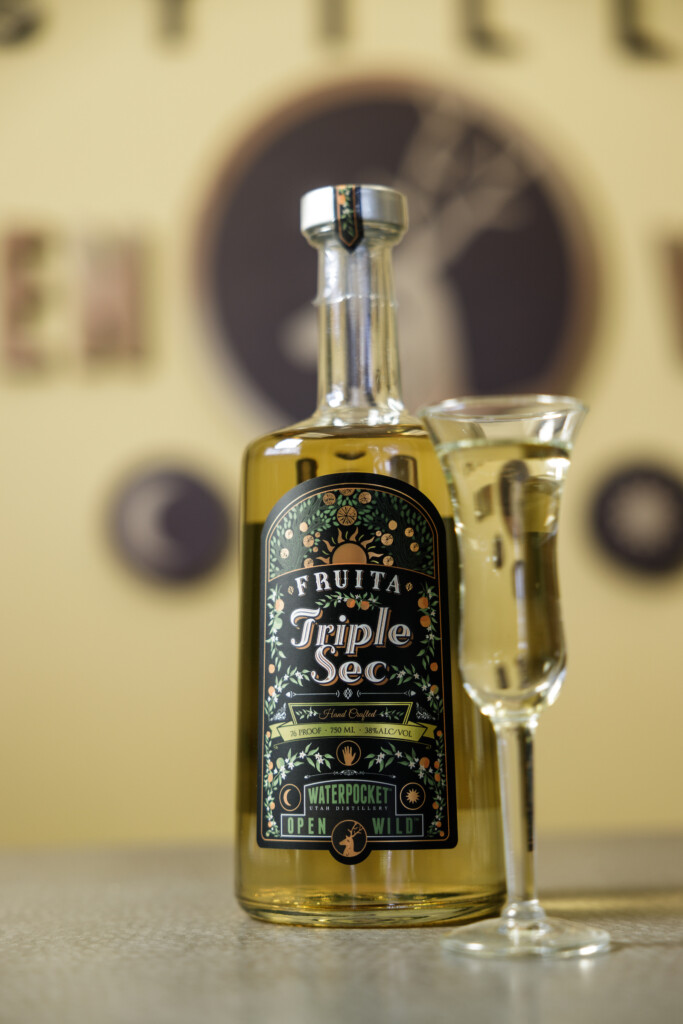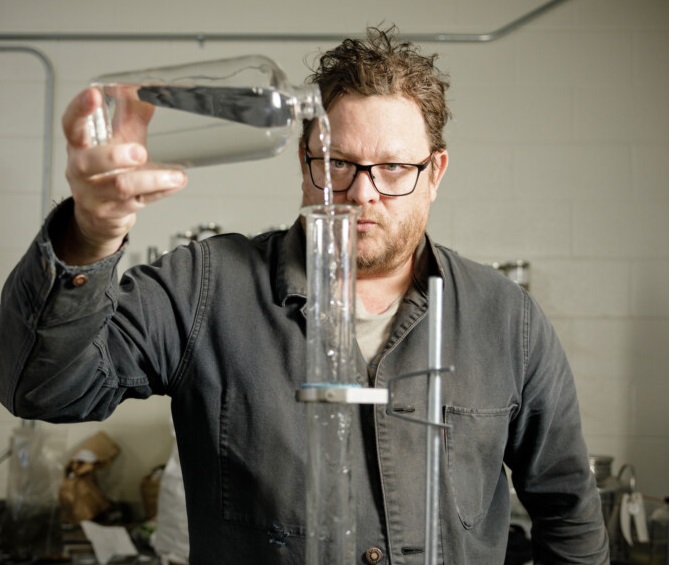Chat with Alan Scott, co-owner of Waterpocket Distillery, and his general polyglot-ness becomes readily apparent. He digresses from Greek mythology to the medicinal textbooks of medieval healers without batting an eyelash, and yes, he is more than happy to opine on local politics (he’s not a fan of the UDABS, but then, who is?).
After years of globetrotting, Alan and his wife Julia came to Utah. Enchanted by the vastness of Utah’s southern deserts, specifically Utah’s Waterpocket Fold, they set down roots and created Waterpocket Distillers.
But their journeys also colored their palates with memories of alpine herb liqueur in the Pyrenees, farmer’s plum brandy in Slovakia, and aromas of anisette drifting from groups of beret-wearing old men in Southern France. Waterpocket Distillers would become the vehicle for those shared memories, fueled with Utah ingredients where possible.
The heart of the operation, other than the two custom stills named “Witch” and “Warlock”, is Julia, Alan’s wife and partner, who keeps the operation on track and Alan focused. It never hurts to couple with a Biochemistry PhD/MBA when manufacturing artisanal spirits like these. The tolerance for error is slim when distilling unicorn spirits in a Walmart world.
Artisans that follow their muses rarely retire rich, and naturally the building of Waterpocket has been a grind. There was no peanut butter whiskey or cheap sourced ethanol vodka to pay the light bills, and seven years on, Alan is proud to say they’re still open. There’s a storefront now in Torrey, Utah, and Alan cheerfully points out that his mechanic now drinks Kummel, his distilled caraway spirit (imagine if Gin and Schnapps had a baby). As always, Alan is thinking one bottle at a time, and the audience is growing slowly and surely.

Waterpocket’s product range shows three families of spirits; House Spirits — modern interpretations of old classics like Gin and Toadstool — historically faithful, locally fueled interpretations of ancient bitter and amari liqueurs and Long Lost Cathedral Valley — a range of European pre-prohibition botanical spirits reinterpreted for local tastes.
Waterpocket is a model of distilling honesty and transparency that few distilleries match, either locally or globally. Most distilleries lie and obfuscate Cathedral Valley — the bigger the distillery the bigger the crime.
Alan has nothing to hide. If he makes it, he will tell you. He will tell you where things came from and when he started to offer whiskey to generate some revenue. He puts it right on the label. He let us know when he sourced whiskey from other places — not something most whiskey makers do — and it’s a business model that is only made more difficult by a UDABC that thinks of producers like Alan as “the Farmers Market” when they want to deal with Walmart. Producers like Alan need to compete with large corporate generic brands or they are at risk of delisting. When your one ultimate customer is a government bureaucracy, it’s a tenuous existence.
In recent months, Alan added a Gin “Temple of the Moon”, named for the sacred formation in Capitol Reef National Park’s Cathedral Valley, and inspired by the aroma and beauty of Utah’s high altitude juniper forests.
His most recent success is Fruita Triple Sec, which has exploded with the Utah bar community. This isn’t your parent’s dusty bottle of Triple Sec, but a historically accurate rendition of the original 1834 recipe from the Combier family in Saumur, with a nod to the Dutch East India Company’s Caribbean renditions. Naturally, Alan did the research.
At the end of the day, Alan and his invaluable and indispensable wife, Julia, realize they have taken Waterpocket from one unicorn to an entire stable of them. They realize they chose the difficult path in following a muse, but as time has gone by, they see that they’ve built a devoted community; a tribe of uncompromising cocktail nerds who seek them out, come hell or high water. One bottle at a time.
Feature Image: Alan Scott working in his lab. Photo by John Taylor.






